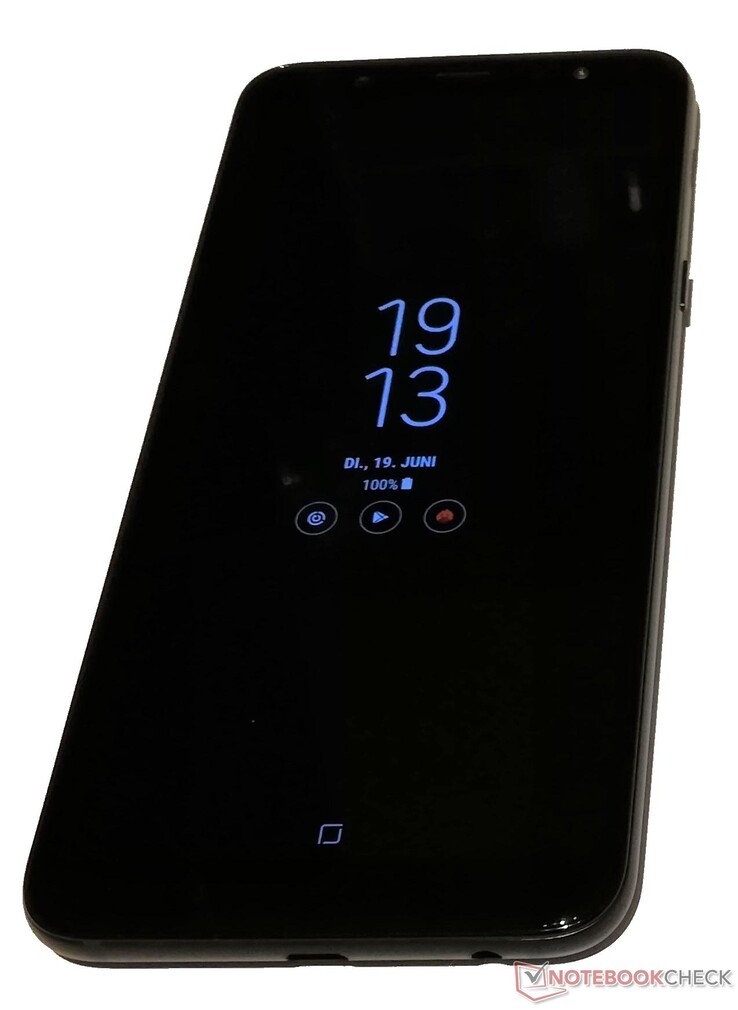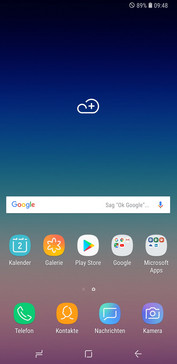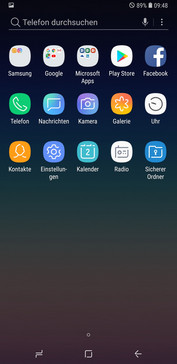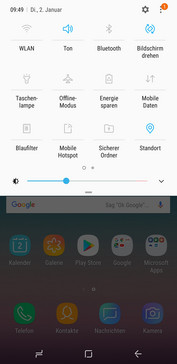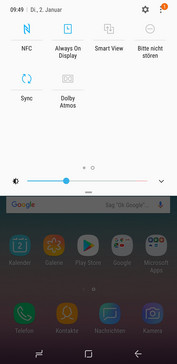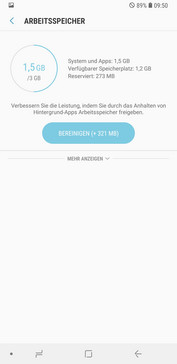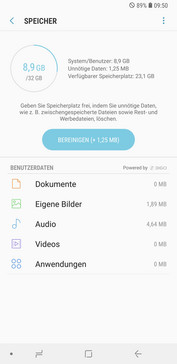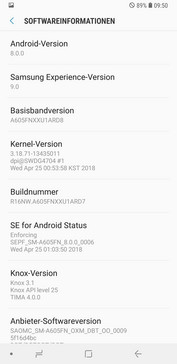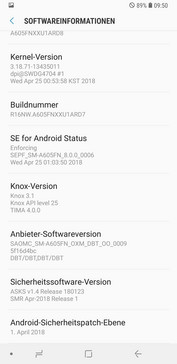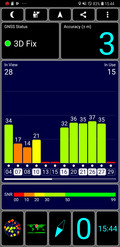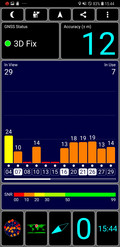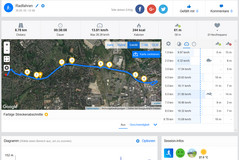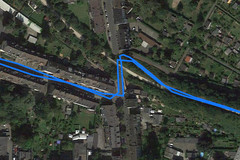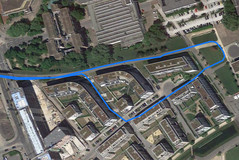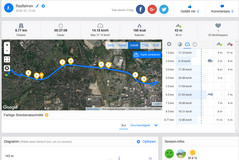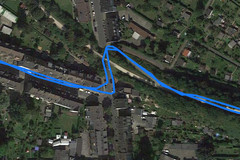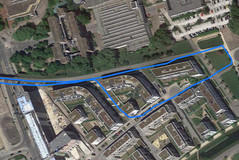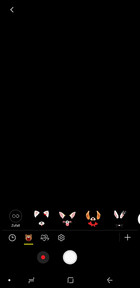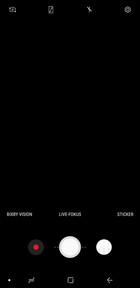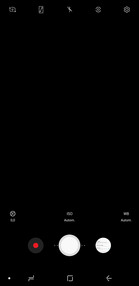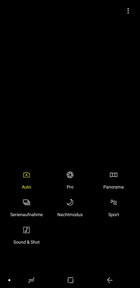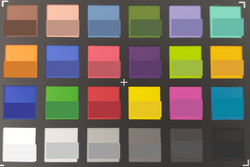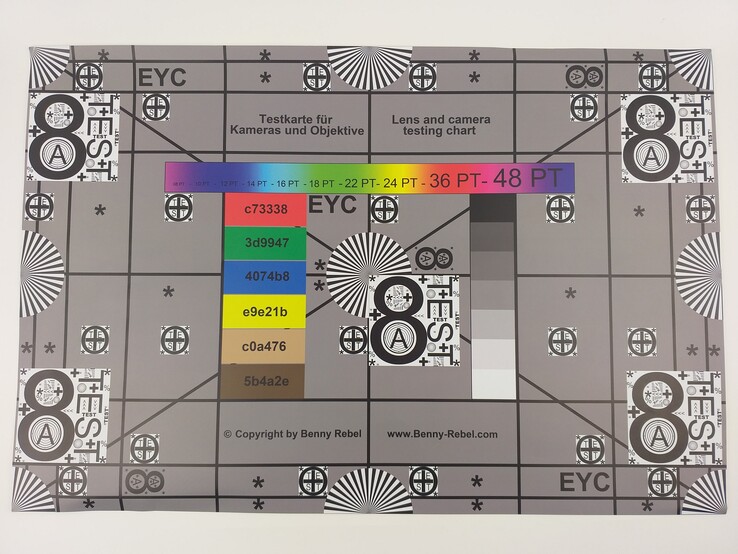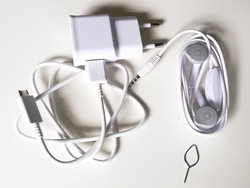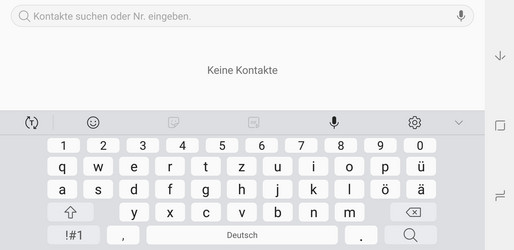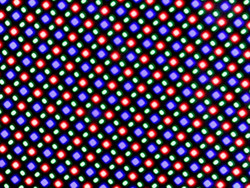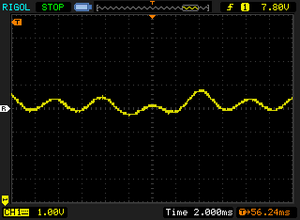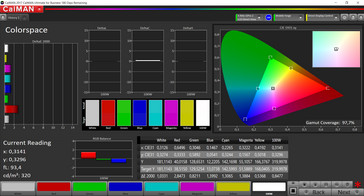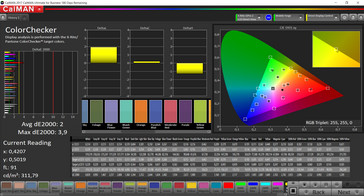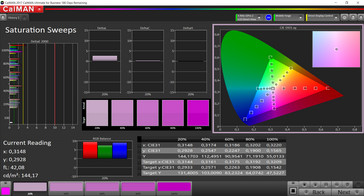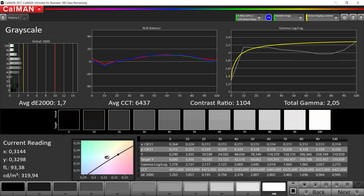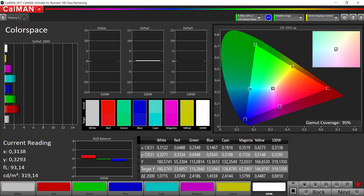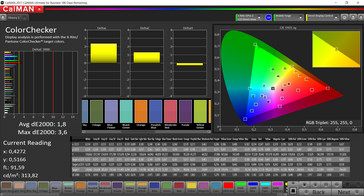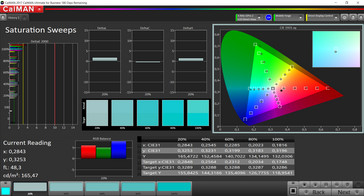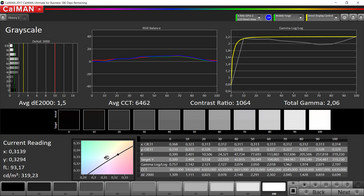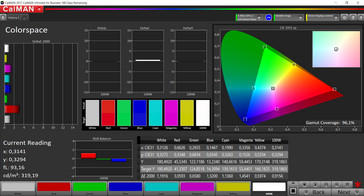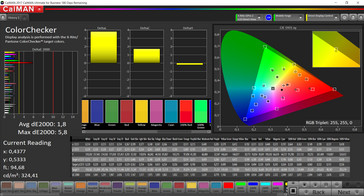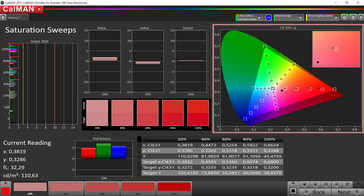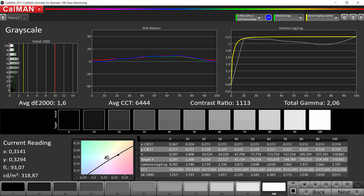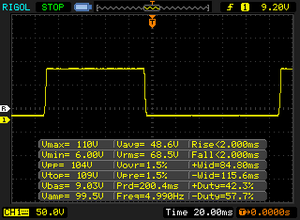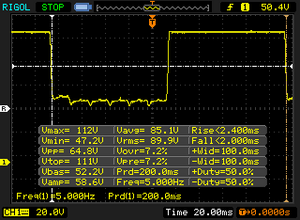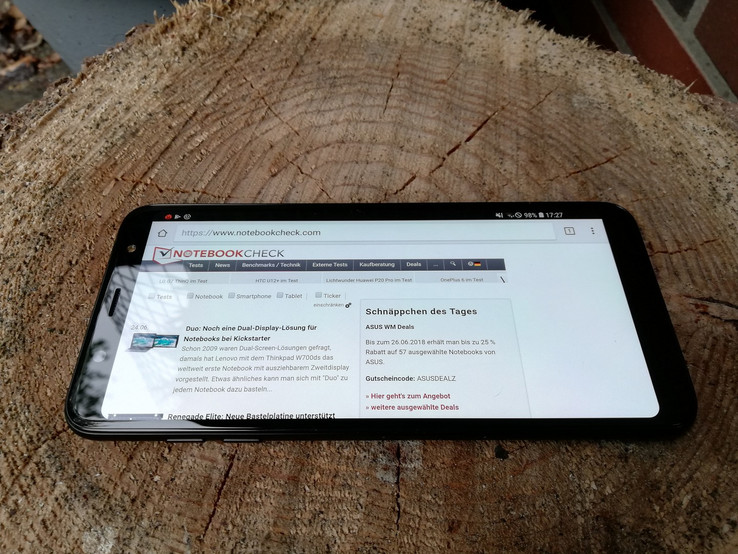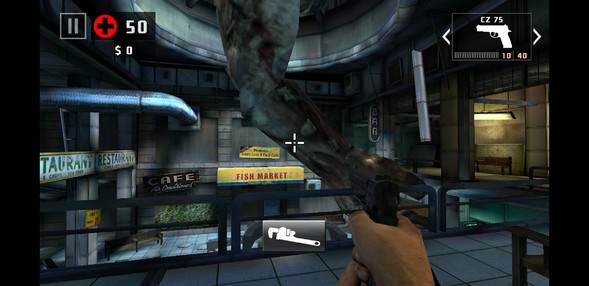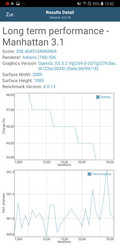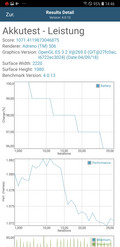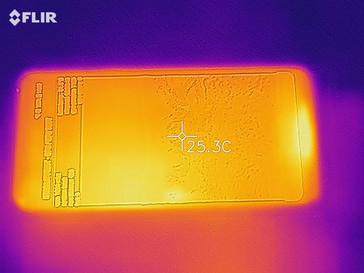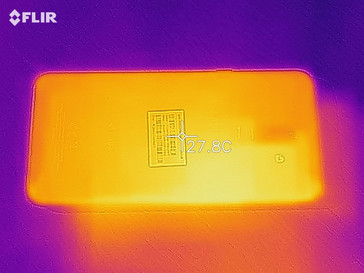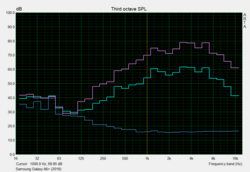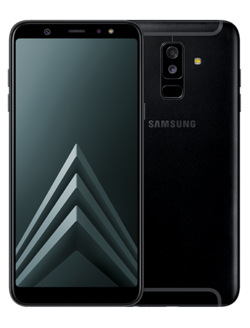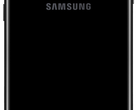Samsung Galaxy A6 Plus (2018) Smartphone Review
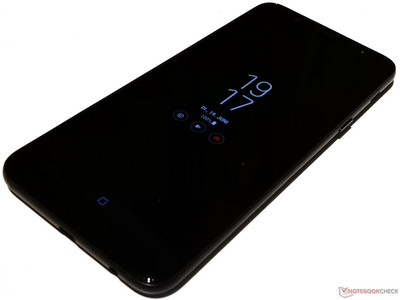
The Samsung Galaxy A6+ is a mid-range smartphone whose specifications look attractive on paper—a Qualcomm Snapdragon 450 and an Adreno 506 graphics unit are strong features, but at a recommended retail price of 370 Euros (~$425; international version ~$350), the device costs a little too much. With 32 GB of flash storage and 3 GB of RAM, at least buyers can expect the Android 8.1 system to run smoothly. Samsung's own Experience UI Version 9.0 serves as the smartphone's user interface. We tested the configuration of the A6+ available in Germany; there is also an international version on the market with 4 GB of RAM and 64 GB of flash storage.
Competition abounds in the 300-400 Euro (~$350-$465) price bracket, so we have whittled the devices for comparison down to just a few models. Although the Galaxy A6+ can already be purchased for less than 300 Euros (~$350) at various retailers, we have categorized the competition based on the recommended retail price of 370 Euros (~$430). Devices with a similar price-performance ratio include the Huawei P20 Lite, HTC's U11 Life, Sony's Xperia XA2, the BQ Aquaris X Pro and the Nokia 7 Plus, among others. It is also worth taking a look at the predecessor model, the Samsung Galaxy A5.
Case - Samsung smartphone with a metal case
Samsung has given the Galaxy A6+'s display lots of space, but in so doing has left out the usual notch on the top edge. As a result, bars for the speaker, front camera and other elements are visible from the front on both the top and bottom of the device. The edges and back are made of sturdy metal, but various plastic trims along the covered antennae for wireless modules, GPS and NFC are designed to prevent the metal from inhibiting communication.
Two slots for the main SIM card and a second SIM and memory card are located on the left side of the device. This means that installing a microSD does not prevent the user from employing the dual SIM function. Both the power button and the volume rocker sit securely in their casing. A conventional 3.5-mm jack enables the user to connect a headset. The smartphone charges and transfers data via a micro USB connection.
Connectivity - Galaxy A6 Plus with dual SIM and memory expansion
The Galaxy A6+ runs on a Qualcomm Snapdragon 450 and an Adreno 506 graphics unit. This mid-range configuration is complemented by 32 GB of storage space and either 3 or 4 GB of RAM. Users who want to install two SIM cards in the Samsung smartphone do not have to go without memory expansion. Two slots on the left side of the device are equipped to house these cards.
Software - Microsoft apps on an Android smartphone
Android Oreo Version 8.0 and the manufacturer's Experience UI Version 9.0 run on the Samsung A6+. The security updates are dated from April 1st, 2018. The Samsung UI has no significant new features. Bixby is once again on board (though he/she still cannot speak with us in German).
Pre-installed programs include various Microsoft apps and Facebook, which can only be deactivated in the software menu. It is not possible to store apps on an SD card or format the card as internal memory, nor is there an option to set up more than one user on the Galaxy smartphone.
Communication and GPS - Accurate location services with the Samsung A6+
The Samsung Galaxy A6+ offers a variety of means by which to make contact with the outside world. In addition to supporting GSM and 3G, the smartphone can establish Cat. 6 LTE connections with a maximum download speed of up to 300 MBit/s and data uploads at up to 50 MBit/s.
Wireless connections according to the a/b/g standards can be established via the integrated WLAN module. In our tests, the Galaxy A6+'s transfer rates were below-average. Our test device received data at a speed of just over 120 MBit/s, landing it in the last place among the competitors.
The Samsung smartphone relies on GPS, GLONASS and Beidu for navigation and location services. We used the GPS Test app to determine how accurately the Galaxy A6+ could position us. Outdoors, the smartphone pinpointed us to within three meters (~10 feet) of our actual location. Even indoors, the satellite connection remained stable although the accuracy reduced to 12 meters (~40 feet).
Our test device's precision in this respect was once again verified by our mandatory bike ride. The divergences compared to our Garmin Edge 500 reference device were small, and appeared mostly on curves and between close-set buildings. At the end of the bike ride, the data we collected from the two devices looked quite similar. Only the two records of change in altitude were somewhat disparate.
Phone Function and Call Quality - Good connection with the A6 Plus
The Samsung Galaxy A6+'s phone app provides a lean user interface, designed for quick dialing with the number pad or searching for contacts. The "Places" tab is also available on our test device. If supported by the service provider, VoLTE can also be used to place phone calls. We could not find a VoWLAN option in the menu, however.
During conversations, participants are easy to understand, and voices are not accompanied by annoying background noise. The maximum volume is just loud enough for the person on the other end to remain audible in adverse sound environments, for example in windy weather. The speakerphone's volume is a little lower, which means that it can be difficult to hear the content of a conversation when the background noise is too loud. In quieter environments however, it is certainly possible to lay the phone on the table and have both hands free.
Cameras - Android smartphone with a good selfie camera
For snapshots and selfies, the Galaxy A6+ is equipped with a 16+5 MP dual camera and a 24 MP front camera. The latter enables the user to take very detailed and high-resolution photos. Two slide controls influence color temperature and image softness. These are joined by a wealth of AI stickers that are automatically pasted in the proper positions in portrait shots.
With its f/1.9 aperture, the Samsung A6+'s main camera takes photos that feel very warm and "sunny" when taken outdoors in bright daylight. Compared to our Canon EOS 70 D reference camera, the outdoor shot looks a little overexposed. Details appear very sharp, light and dark areas are clearly distinguished from each other, and color transitions are well-defined. The quality of close-ups is similarly good, although in the dark or in poor lighting, objects look washed out and blurry. Users who are unsatisfied with the automatic camera performance can set the ISO, white balance and brightness in Pro mode. Further modes include Night, Sport and Panorama, among others. In addition, Bixby always stands at the ready to identify objects within the camera's field of view and display information about them.
A photograph of the ColorChecker Passport demonstrates how well the Samsung Galaxy A6+'s camera reproduces colors. Here we see that colors are generally too light, but black and dark gray tones look similar to their true colors.
In controlled lighting, the A6+ reproduces our test chart very well. Details remain clearly recognizable in every part of the image, and both fine lines and numbers are easily discernible. Only in the lower corners does the picture look somewhat pale.
Accessories and Warranty - Headset and charging cable for the Samsung smartphone
The Galaxy A6 Plus's box contains a USB power supply with matching cable, a SIM ejector tool, and a stereo headset. The power supply has a power rating of 7.75 watts. The USB cable plugs into the side of the power supply and connects to the Samsung smartphone via its microUSB port. The headset is well-suited not only for conducting conversations with good sound quality and at a high volume, it also generates a good enough sound for listening to music.
In addition to the accessories that come with the device, numerous cases, screen protectors, cables, headsets, charging devices and much more can be purchased from Samsung's online store.
The smartphone comes with a 24-month warranty, and the accessories are under warranty for 12 months. Please see our Guarantees, Return policies and Warranties FAQ for country-specific information.
Input Devices and Operation - Samsung keyboard and slow face-recognition
The Galaxy A6+ is equipped with Samsung's own keyboard app, which enables users to type texts quickly and easily. From the settings menu, the user can tailor the keyboard to his or her liking. It is possible to adjust the size of the individual keys, as well as the amount of display room the keyboard occupies. Users can also select preferred symbols to take up residence on certain keys. The touchscreen works perfectly for this use and reacts instantaneously. When executing drag-and-drop gestures, there is always a faint level of friction between the screen and the user's fingertips.
Our test device is equipped with numerous security features to prevent unauthorized persons from unlocking the smartphone. While the simple mechanisms—like PIN or lock screen pattern input—work well, the fingerprint reader also seamlessly unlocks the phone. The face-recognition, on the other hand, is somewhat slow. In our tests, it often took more than a second before the A6 Plus unlocked.
Display - Super AMOLED for great colors
Samsung has chosen a Super AMOLED display with a resolution of 2220x1080 pixels for the new Galaxy A6+. The OLED technology is designed to offer better color reproduction and viewing angle stability while using less energy. The advantages and disadvantages of IPS vs. OLED panels on laptops are laid out in our Display Comparison: OLED vs. IPS article. Although the primary focus is on laptop displays, our findings apply to smartphone displays as well.
Devices with IPS panels in this price bracket do not reach higher average brightness levels than our test device. The display's brightness distribution is 93% similar across the screen, landing the Galaxy A6+ in a shared first place position alongside Sony's Xperia XA2 and the Galaxy A5 (2017). The average brightness level of 513 cd/m² was actually exceeded in our APL measurement and came instead to 659 cd/m². This test simulates everyday conditions with evenly distributed light and dark areas in all portions of the screen. Note: These brightness levels can only be reached when the ambient light sensor is active. If the sensor is deactivated, the brightness is limited to a maximum of 331 cd/m².
| |||||||||||||||||||||||||
Brightness Distribution: 93 %
Center on Battery: 519 cd/m²
Contrast: ∞:1 (Black: 0 cd/m²)
ΔE ColorChecker Calman: 1.8 | ∀{0.5-29.43 Ø4.77}
ΔE Greyscale Calman: 1.5 | ∀{0.09-98 Ø5}
95% sRGB (Calman 2D)
Gamma: 2.06
CCT: 6462 K
| Samsung Galaxy A6 Plus 2018 Super AMOLED, 2220x1080, 6" | Huawei P20 Lite IPS, 2280x1080, 5.8" | HTC U11 Life SLCD, 1920x1080, 5.2" | Sony Xperia XA2 IPS, 1920x1080, 5.2" | Samsung Galaxy A5 2017 Super AMOLED, 1920x1080, 5.2" | BQ Aquaris X Pro IPS, 1920x1080, 5.2" | Nokia 7 Plus IPS, 2160x1080, 6" | |
|---|---|---|---|---|---|---|---|
| Screen | -106% | -94% | -136% | 8% | -204% | -77% | |
| Brightness middle (cd/m²) | 519 | 528 2% | 545 5% | 513 -1% | 539 4% | 458 -12% | 458 -12% |
| Brightness (cd/m²) | 513 | 525 2% | 526 3% | 506 -1% | 542 6% | 473 -8% | 463 -10% |
| Brightness Distribution (%) | 93 | 89 -4% | 87 -6% | 93 0% | 93 0% | 88 -5% | 92 -1% |
| Black Level * (cd/m²) | 0.51 | 0.42 | 0.42 | 0.51 | 0.22 | ||
| Colorchecker dE 2000 * | 1.8 | 4.7 -161% | 4.9 -172% | 5 -178% | 1.6 11% | 7.1 -294% | 4 -122% |
| Colorchecker dE 2000 max. * | 3.6 | 8.9 -147% | 8.5 -136% | 11.4 -217% | 2.6 28% | 14.5 -303% | 7.4 -106% |
| Greyscale dE 2000 * | 1.5 | 6.4 -327% | 5.4 -260% | 7.8 -420% | 1.5 -0% | 10.5 -600% | 4.7 -213% |
| Gamma | 2.06 107% | 2.22 99% | 2.31 95% | 2.2 100% | 2.28 96% | 2.28 96% | 2.19 100% |
| CCT | 6462 101% | 7987 81% | 7610 85% | 7964 82% | 6422 101% | 8951 73% | 7425 88% |
| Contrast (:1) | 1035 | 1298 | 1221 | 898 | 2082 |
* ... smaller is better
Screen Flickering / PWM (Pulse-Width Modulation)
| Screen flickering / PWM detected | 240 Hz | ||
The display backlight flickers at 240 Hz (worst case, e.g., utilizing PWM) . The frequency of 240 Hz is relatively low, so sensitive users will likely notice flickering and experience eyestrain at the stated brightness setting and below. In comparison: 53 % of all tested devices do not use PWM to dim the display. If PWM was detected, an average of 8077 (minimum: 5 - maximum: 343500) Hz was measured. | |||
OLED technology enables the reproduction of such a rich, true black that our measuring tools are incapable of generating a result. The same goes for the contrast ratio, which is equally unparalleled by other smartphones' IPS panels. These excellent results are tangible in use. For example, in a dark room, the Galaxy A6+ is invisible if an entirely black image is displayed on the screen. Even in daylight, dark areas of an image look very rich and hardly distinguishable from the dark border around the Samsung A6 Plus's screen.
In the color profile settings, the color reproduction can be manually customized, or the user can select from three presets. An analysis of these three profiles reveals that the "Simple" setting produces a balanced color profile in the sRGB color space. The Adobe RGB mode substantially enlarges said color space, and the "Cinema" profile shifts all the colors toward the warmer end of the scale.
Display Response Times
| ↔ Response Time Black to White | ||
|---|---|---|
| 4 ms ... rise ↗ and fall ↘ combined | ↗ 2 ms rise | |
| ↘ 2 ms fall | ||
| The screen shows very fast response rates in our tests and should be very well suited for fast-paced gaming. In comparison, all tested devices range from 0.1 (minimum) to 240 (maximum) ms. » 15 % of all devices are better. This means that the measured response time is better than the average of all tested devices (20.2 ms). | ||
| ↔ Response Time 50% Grey to 80% Grey | ||
| 4.4 ms ... rise ↗ and fall ↘ combined | ↗ 2.4 ms rise | |
| ↘ 2 ms fall | ||
| The screen shows very fast response rates in our tests and should be very well suited for fast-paced gaming. In comparison, all tested devices range from 0.165 (minimum) to 636 (maximum) ms. » 15 % of all devices are better. This means that the measured response time is better than the average of all tested devices (31.6 ms). | ||
The A6+'s display brightness is sufficient for viewing the screen content outdoors without any trouble. On cloudy days, the screen reflections are also unproblematic. In direct sunlight, however, our test device cannot overcome the intense ambient light. As a result, anyone intending to use the smartphone for a prolonged period is better off finding a shady spot.
In terms of viewing angle stability, the Galaxy A6+'s OLED panel can hold its own against the competition. From any angle, the screen content looks accurate and easily recognizable. This means that the user always has a clear view of the smartphone's display content, even from less than ideal vantage points.
The Samsung Galaxy A6 Plus runs on two chips from Qualcomm: the Snapdragon 450 and the Adreno 506. Combined with 3 GB of RAM, this hardware configuration is very well-suited to a lower mid-range smartphone. In our test device's price bracket, other manufacturers offer faster components. The SoC has 8 cores that can process 8 threads and clocks at 1800 MHz. The chip, which is produced using 14 nm process technology, supports LPDDR3 RAM in single-channel mode.
In our benchmark tests, the A6+'s performance is below average. The smartphone is consistently outdone by its own predecessor, the Galaxy A5 (2017). Compared to the rest of the competition, the A6+ comes in toward the bottom of the list regardless of whether the test is more targeted toward graphics or work performance. The Galaxy A6+ cannot keep up with similarly-priced smartphones here. However, given that its price has dropped to less than 300 Euros (~$350) in various online stores, perhaps the device deserves to be compared to smartphones under this price point.
| AnTuTu v7 - Total Score (sort by value) | |
| Samsung Galaxy A6 Plus 2018 | |
| Huawei P20 Lite | |
| Sony Xperia XA2 | |
| BQ Aquaris X Pro | |
| Nokia 7 Plus | |
| Average Qualcomm Snapdragon 450 (56497 - 73468, n=11) | |
| Lightmark - 1920x1080 1080p (sort by value) | |
| Nokia 7 Plus | |
| Average Qualcomm Snapdragon 450 (5.38 - 5.41, n=2) | |
| Basemark ES 3.1 / Metal - offscreen Overall Score (sort by value) | |
| Samsung Galaxy A5 2017 | |
| Nokia 7 Plus | |
| Average Qualcomm Snapdragon 450 (129 - 129, n=2) | |
| Average of class Smartphone (205 - 7731, n=34, last 2 years) | |
The results in the browser benchmarks are not consistent enough to reach a decisive conclusion about the device's performance. While the Galaxy A6+ lands in last place in Jetstream 1.1 and Octane V2, it secures first place among the competition in Mozilla Kraken 1.1. In the WebXPRT2015 benchmark, our test device exhibits a solid performance and positions itself in the middle range between its competitors. In everyday use, surfing on the Samsung smartphone is quick and smooth. We did not notice any odd behavior during our tests.
| JetStream 1.1 - Total Score | |
| Nokia 7 Plus (Chrome 60) | |
| Samsung Galaxy A5 2017 (Samsung Browser (Chrome 44)) | |
| HTC U11 Life (Chrome 63) | |
| Sony Xperia XA2 (Chrome 65.0.3325.109) | |
| BQ Aquaris X Pro (Chrome 59.0.3071.125) | |
| Huawei P20 Lite (Chrome 63) | |
| Average Qualcomm Snapdragon 450 (22 - 22.7, n=13) | |
| Samsung Galaxy A6 Plus 2018 (Chrome 67) | |
| Octane V2 - Total Score | |
| Average of class Smartphone (2228 - 126661, n=197, last 2 years) | |
| Nokia 7 Plus (Chrome 60) | |
| Samsung Galaxy A5 2017 (Samsung Browser (Chrome 44)) | |
| HTC U11 Life (Chrome 63) | |
| Sony Xperia XA2 (Chrome 65.0.3325.109) | |
| BQ Aquaris X Pro (Chrome 59.0.3071.125) | |
| Huawei P20 Lite | |
| Samsung Galaxy A6 Plus 2018 (Chrome 67) | |
| Average Qualcomm Snapdragon 450 (3470 - 4115, n=14) | |
| Mozilla Kraken 1.1 - Total | |
| Average Qualcomm Snapdragon 450 (11012 - 11863, n=14) | |
| Samsung Galaxy A6 Plus 2018 (Chrome 67) | |
| Huawei P20 Lite (Chrome 63) | |
| Sony Xperia XA2 (Chrome 65.0.3325.109) | |
| HTC U11 Life (Chrome 63) | |
| BQ Aquaris X Pro (Chrome 59.0.3071.125) | |
| Samsung Galaxy A5 2017 (Samsung Browser (Chrome 44)) | |
| Nokia 7 Plus (Chrome 60) | |
| Average of class Smartphone (257 - 28190, n=157, last 2 years) | |
| WebXPRT 2015 - Overall | |
| Nokia 7 Plus (Chrome 60) | |
| Sony Xperia XA2 (Chrome 65.0.3325.109) | |
| HTC U11 Life (Chrome 63) | |
| Average Qualcomm Snapdragon 450 (90 - 103, n=7) | |
| Samsung Galaxy A6 Plus 2018 (Chrome 67) | |
| Samsung Galaxy A5 2017 (Samsung Browser (Chrome 44)) | |
| BQ Aquaris X Pro (Chrome 59.0.3071.125) | |
| Huawei P20 Lite (Chrome 63) | |
* ... smaller is better
Samsung has equipped the Galaxy A6+ with 32 GB of eMMC flash storage. This storage medium reads and writes data at average speeds and places our test device in the middle range compared to its competitors. The built-in SD card reader, on the other hand, performs above average. With our Toshiba Exceria Pro M501 reference memory card, the Samsung smartphone lands one of the better positions.
| Samsung Galaxy A6 Plus 2018 | Huawei P20 Lite | HTC U11 Life | Sony Xperia XA2 | Samsung Galaxy A5 2017 | BQ Aquaris X Pro | Nokia 7 Plus | Average 32 GB eMMC Flash | Average of class Smartphone | |
|---|---|---|---|---|---|---|---|---|---|
| AndroBench 3-5 | 72% | 30% | -4% | -29% | -10% | 20% | -7% | 1257% | |
| Sequential Read 256KB (MB/s) | 298.8 | 293.9 -2% | 268 -10% | 271.5 -9% | 182 -39% | 270.5 -9% | 283.1 -5% | 242 ? -19% | 2242 ? 650% |
| Sequential Write 256KB (MB/s) | 88.5 | 198.3 124% | 120 36% | 127.4 44% | 77.1 -13% | 139.6 58% | 211.6 139% | 100.5 ? 14% | 1881 ? 2025% |
| Random Read 4KB (MB/s) | 72.9 | 48.19 -34% | 39.3 -46% | 43.07 -41% | 22.41 -69% | 37.97 -48% | 54.7 -25% | 43.1 ? -41% | 299 ? 310% |
| Random Write 4KB (MB/s) | 16.1 | 71.1 342% | 50.2 212% | 13.82 -14% | 12.13 -25% | 12.07 -25% | 19.62 22% | 22.3 ? 39% | 345 ? 2043% |
| Sequential Read 256KB SDCard (MB/s) | 83.4 ? | 83.5 ? 0% | 82.8 ? -1% | 86 ? 3% | 73.7 ? -12% | 78.7 ? -6% | 82.2 -1% | 71.8 ? -14% | |
| Sequential Write 256KB SDCard (MB/s) | 67.8 ? | 69 ? 2% | 59.8 ? -12% | 64.8 ? -4% | 56 ? -17% | 49.77 ? -27% | 62.3 -8% | 52.9 ? -22% |
Games - Display with a lot of friction while gaming
The Adreno 506 GPU built into the Galaxy A6+ is a mid-range graphics card for smartphones that can easily handle most games in the app store. In our tests, the games “Dead Trigger 2” and “Temple Run 2” always ran smoothly, and programs that require use of the position sensor worked without much lag either. Over extended periods, the level of friction between the screen and the user's fingertips is a little too high and can become somewhat uncomfortable. We use the Gamebench tool to log frame rates. The tool is available as a smartphone app or desktop application.
| Dead Trigger 2 | |||
| Settings | Value | ||
| high | 30 fps | ||
| Temple Run 2 | |||
| Settings | Value | ||
| default | 60 fps | ||
Emissions - Cool head and good sound on the Galaxy A6+
The Samsung Galaxy A6 Plus hardly warms up at all in everyday use. Both in idle mode and under load, we did not measure any high temperatures. The smartphone never reached the 27°C (80.6°F) line, and the device's performance over long periods is not affected by temperature-related throttling. The demanding Manhattan 3.1 performance test recorded only minimal variances that have no noticeable effects.
(+) The maximum temperature on the upper side is 26.9 °C / 80 F, compared to the average of 35.2 °C / 95 F, ranging from 21.9 to 247 °C for the class Smartphone.
(+) The bottom heats up to a maximum of 26.1 °C / 79 F, compared to the average of 34 °C / 93 F
(+) In idle usage, the average temperature for the upper side is 25.1 °C / 77 F, compared to the device average of 32.9 °C / 91 F.
Speaker
The Galaxy A6+'s speakers prove to be an attractive feature. They generate a good sound and can be relatively loud compared to the competition. Bass tones are present to a certain extent, but buzz a little at maximum volume. High tones, on the other hand, are balanced. This means that the Samsung A6 Plus is well-suited for the occasional listen, however, the ambient noise level in the room should be fairly low.
The stereo headset that comes with the smartphone is also good, and considerably louder. The headset's quality is sufficient in most circumstances and can be used both for phone calls and playing media content.
Samsung Galaxy A6 Plus 2018 audio analysis
(+) | speakers can play relatively loud (86.9 dB)
Bass 100 - 315 Hz
(-) | nearly no bass - on average 24.3% lower than median
(±) | linearity of bass is average (7.4% delta to prev. frequency)
Mids 400 - 2000 Hz
(+) | balanced mids - only 4.9% away from median
(+) | mids are linear (6.8% delta to prev. frequency)
Highs 2 - 16 kHz
(±) | higher highs - on average 8.6% higher than median
(+) | highs are linear (6.7% delta to prev. frequency)
Overall 100 - 16.000 Hz
(±) | linearity of overall sound is average (21.7% difference to median)
Compared to same class
» 43% of all tested devices in this class were better, 8% similar, 49% worse
» The best had a delta of 11%, average was 35%, worst was 134%
Compared to all devices tested
» 61% of all tested devices were better, 7% similar, 32% worse
» The best had a delta of 4%, average was 24%, worst was 134%
Huawei P20 Lite audio analysis
(+) | speakers can play relatively loud (84.1 dB)
Bass 100 - 315 Hz
(-) | nearly no bass - on average 25% lower than median
(±) | linearity of bass is average (9.4% delta to prev. frequency)
Mids 400 - 2000 Hz
(+) | balanced mids - only 4.4% away from median
(±) | linearity of mids is average (8.7% delta to prev. frequency)
Highs 2 - 16 kHz
(±) | higher highs - on average 10.5% higher than median
(+) | highs are linear (3.4% delta to prev. frequency)
Overall 100 - 16.000 Hz
(±) | linearity of overall sound is average (25.5% difference to median)
Compared to same class
» 63% of all tested devices in this class were better, 7% similar, 30% worse
» The best had a delta of 11%, average was 35%, worst was 134%
Compared to all devices tested
» 78% of all tested devices were better, 5% similar, 18% worse
» The best had a delta of 4%, average was 24%, worst was 134%
Samsung smartphone with long battery life
Another advantage of the OLED display is its low power draw, which is reflected in our measurements. The Galaxy A6+ is by far the most energy-saving device among the competitors. With an power draw of under a watt in idle, and only a little over 3 watts under load, the Samsung smartphone takes the lead in this respect. The ambient light sensor has no influence on the results here. When activated, the power usage in idle mode at maximum brightness comes to 1.24 watts.
The 7.75-watt power supply that comes with the smartphone charges the 3500 mAh battery in around 2.5 hours.
| Off / Standby | |
| Idle | |
| Load |
|
Key:
min: | |
| Samsung Galaxy A6 Plus 2018 3500 mAh | Huawei P20 Lite 3000 mAh | HTC U11 Life 2600 mAh | Sony Xperia XA2 3300 mAh | Samsung Galaxy A5 2017 3000 mAh | BQ Aquaris X Pro 3100 mAh | Nokia 7 Plus 3800 mAh | Average Qualcomm Snapdragon 450 | Average of class Smartphone | |
|---|---|---|---|---|---|---|---|---|---|
| Power Consumption | -95% | -76% | -45% | -28% | -82% | -102% | -101% | -140% | |
| Idle Minimum * (Watt) | 0.62 | 0.98 -58% | 0.63 -2% | 0.39 37% | 0.64 -3% | 0.67 -8% | 0.65 -5% | 0.794 ? -28% | 0.849 ? -37% |
| Idle Average * (Watt) | 0.96 | 2 -108% | 2.1 -119% | 1.61 -68% | 1.36 -42% | 1.7 -77% | 1.76 -83% | 2.27 ? -136% | 1.446 ? -51% |
| Idle Maximum * (Watt) | 0.99 | 2.11 -113% | 2.15 -117% | 1.62 -64% | 1.4 -41% | 1.78 -80% | 1.78 -80% | 2.48 ? -151% | 1.632 ? -65% |
| Load Average * (Watt) | 1.85 | 3.9 -111% | 3.34 -81% | 3.12 -69% | 2.53 -37% | 4.42 -139% | 4.47 -142% | 3.95 ? -114% | 6.93 ? -275% |
| Load Maximum * (Watt) | 3.04 | 5.62 -85% | 4.83 -59% | 4.92 -62% | 3.63 -19% | 6.3 -107% | 9.13 -200% | 5.38 ? -77% | 11.3 ? -272% |
* ... smaller is better
Battery Life
The Samsung Galaxy A6+'s battery life is very good. In our WLAN test, which is designed to simulate everyday use, the smartphone runs at a brightness level of 150 cd/m² for a little over 14 hours. Here, too, this run time earns our test device first place among the competitors.
| Samsung Galaxy A6 Plus 2018 3500 mAh | Huawei P20 Lite 3000 mAh | HTC U11 Life 2600 mAh | Sony Xperia XA2 3300 mAh | Samsung Galaxy A5 2017 3000 mAh | BQ Aquaris X Pro 3100 mAh | Nokia 7 Plus 3800 mAh | |
|---|---|---|---|---|---|---|---|
| Battery runtime | -42% | -9% | 4% | 20% | -17% | -26% | |
| Reader / Idle (h) | 30.3 | 12.5 -59% | 30.3 0% | 41.7 38% | 40.3 33% | 30.7 1% | 28.4 -6% |
| H.264 (h) | 15.3 | 7.8 -49% | 13.3 -13% | 12.8 -16% | 16.4 7% | 10.7 -30% | 11.8 -23% |
| WiFi v1.3 (h) | 14.1 | 9.7 -31% | 12.1 -14% | 14.8 5% | 14.1 0% | 12.2 -13% | 11.2 -21% |
| Load (h) | 5.6 | 4.1 -27% | 5.1 -9% | 5 -11% | 7.8 39% | 4.2 -25% | 2.6 -54% |
Pros
Cons
Verdict - Mid-range with long battery life and OLED display
In our tests, the Samsung Galaxy A6+ presents itself as a good mid-range smartphone. The mixed results in the benchmarks leave the A6 Plus in the lower mid-range among the competitors, but its good battery life sets it apart from the competition once again. The most significant selling point is the smartphone's Super AMOLED display. Conventional IPS panels cannot keep up with its display image performance.
The Samsung Galaxy A6+ stands out with its OLED display and long battery life. With its slim design and smooth system performance to boot, interested customers can expect a solid mid-range smartphone.
For the recommended retail price of 370 Euros (~$425; international version ~$350), the Galaxy A6+ would not be especially worthy of recommendation. However, because various online shops are already offering the device for less than 300 Euros (~$350), it is now one of the top-performing smartphones in the lower price bracket.
Samsung Galaxy A6 Plus 2018
- 06/26/2018 v6 (old)
Mike Wobker


